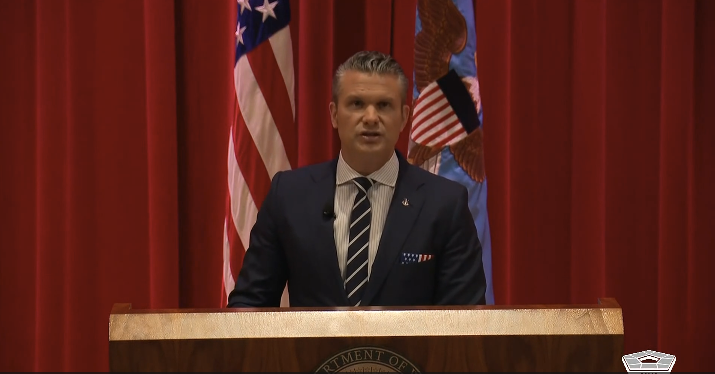In case you’ve been living under a rock for the past few days, a tectonic shift is underway in the way the Pentagon does business. (Ha, ha, ha.)
Over the course of his 70-minute speech to defense industry execs, military procurement officials, and others at the National War College on Friday, Secretary of Defense Pete Hegseth outlined his plan to make good on the major reforms to the Pentagon’s requirements and acquisition process he’s promised since taking the helm.
If you have a stake in any of that (and if you’re reading Tectonic, you probably do), there was a lot to like.
Need for speed: The BLUF of Hegseth’s speech was “speed.” The SecDef mentioned the word 25 times in his address, and the reforms he announced were single-mindedly focused on accelerating innovation, procurement, contracting, and sales.
On the requirements front, he killed the Joint Capabilities Integration and Development System (JCIDS), which the Pentagon used to validate requirements, and replaced it with three new bodies:
- The Requirements and Resourcing Alignment Board (RRAB), which will determine which of the Pentagon’s warfighting priorities require immediate focus and how much money each will get from the new Joint Acceleration Reserve.
- The Joint Acceleration Reserve, a pool of money set aside to fund those top priorities.
- Mission Engineering and Integration Activity, a new organization bringing government, industry, and labs together early on to quickly experiment, test, and prototype new tech.
Hegseth also directed the heads of the services to launch reviews of their own requirements processes to “expedite outcomes, strengthen force design, enhance industry engagement, and enable experimentation-led approaches.”
Buying power: On the acquisition front, he streamlined the Pentagon’s procurement offices by replacing Program Executive Officers with more agile Portfolio Acquisition Executives (PAEs), who will manage interrelated programs with greater autonomy.
He also directed procurement officials to take a commercial-first approach, adopt a more risk-tolerant mindset, and accept the “85 percent solution and iterate together over time to achieve the 100 percent solution,” which means there will be “no non-compliant bids.”
Industry will also be expected to invest more of their own money in R&D, and in turn, Hegseth said the Pentagon will award “companies bigger, longer contracts for proven systems…so those companies will be confident in investing more to grow the industrial base.”
Hyped up: Needless to say, all of that was pretty well-received by the folks in the room, especially on the startup side of the ball. “There was nothing not to like,” defense innovation legend Steve Blank told Tectonic. “There are only two people, two organizations who would hate this speech: One was China, and the other was the defense primes.”
According to Blank, the three most important takeaways from Hegseth’s speech were:
- The “unprecedented” prioritization of “buying commercial first,” “buying commercial second,” and then “finally, if and only if [commercial doesn’t work] will you do some bespoke contracting.”
- The call for a decreased reliance on DFAR, the set of regulations that supplements the Pentagon’s requirements under the Federal Acquisition Regulation, and increased use of OTAs to accelerate the “speed and urgency for deployment.”
- The establishment of the Portfolio Acquisition Executives, which “cut across all the silos that existed.”
Investors are pretty fired up, too. “This is more than just streamlining procurement and partnering with industry, the Secretary and the President are putting their own political capital on the table to ensure the US can innovate and field capabilities faster than our adversaries,” Katherine Boyle, co-founder of a16z’s American Dynamism practice, told Tectonic in a statement.
As CSIS’s defense-industrial base expert Jerry McGinn wrote, “What is clear is that this is truly the hour of the industrial base.” With the set of changes outlined in Hegseth’s speech and the bipartisan consensus on acquisition reform in the SPEED and FoRGED Acts, we’d have to agree.

